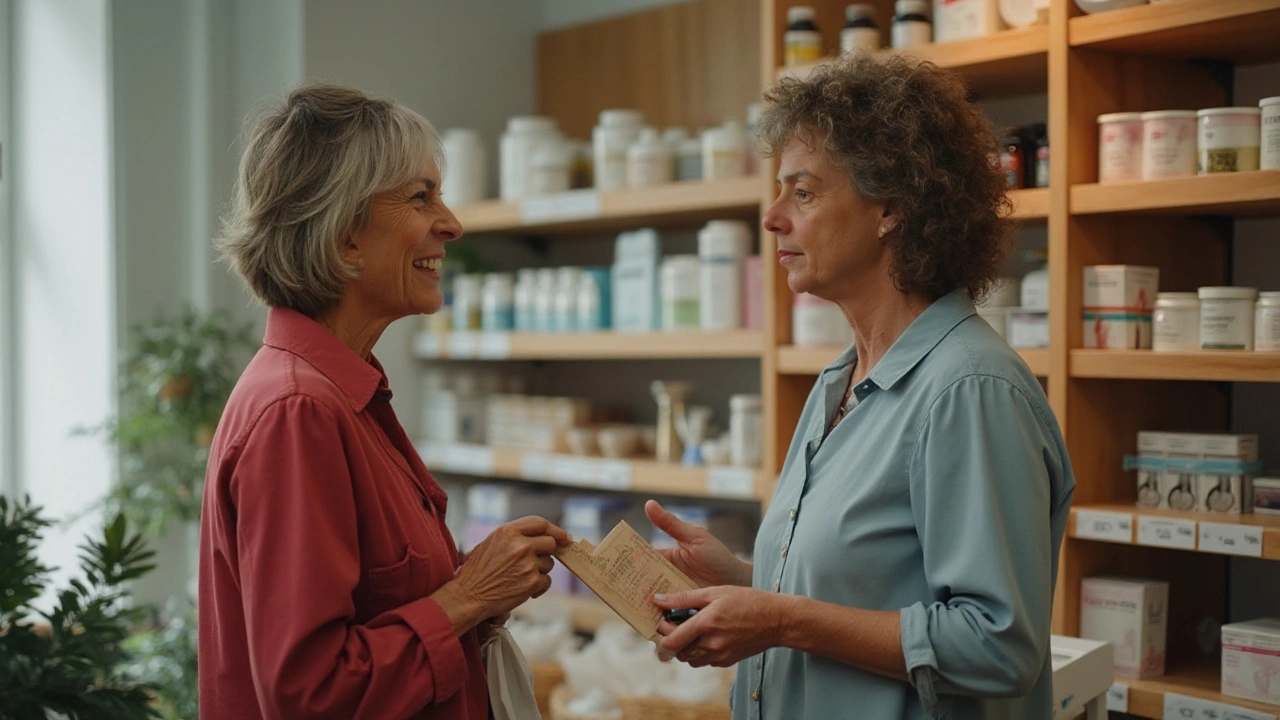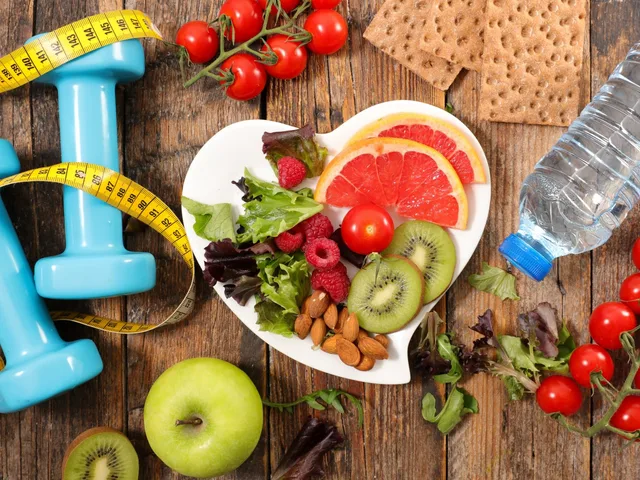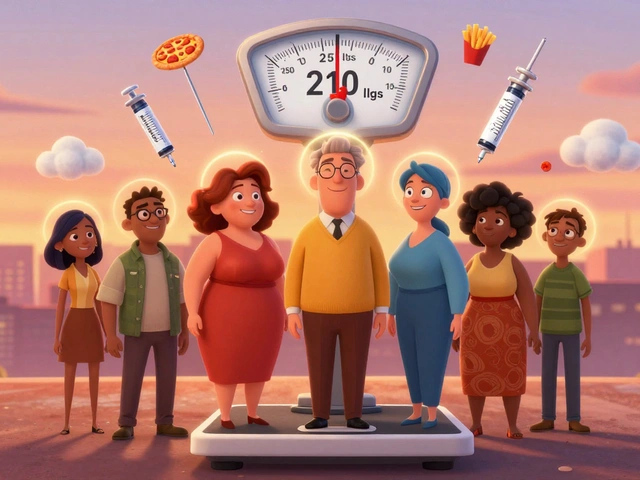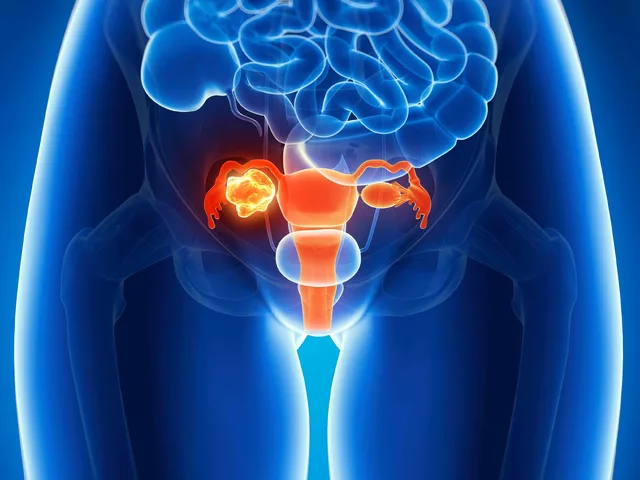Understanding Menstrual Cramps and Age: What Changes to Expect

Menstrual cramps, often an unwelcome monthly visitor, are a reality for many women across the globe. However, what many might not realize is how these pains can shift and change as years go by. From your teenage years to menopause, this journey of fluctuations and patterns is deeply intertwined with various bodily changes.
Whether it’s stemming from hormonal changes, lifestyle shifts, or underlying medical conditions, understanding the evolution of menstrual cramps with age can empower you to make effective choices. Let's dive into the world of period pain and explore how growing older can affect your monthly cycle.
- Understanding Menstrual Cramps
- How Age Affects Menstrual Pain
- Hormonal Changes Over the Years
- Lifestyle and Medical Influences
- Managing Cramps at Different Stages
Understanding Menstrual Cramps
Menstrual cramps, or dysmenorrhea, are a familiar source of discomfort for many women during their reproductive years. They occur due to the contraction of the uterus as it sheds its lining. These rhythmic spasms are triggered by hormone-like substances called prostaglandins, which are produced by the uterine lining. The level of pain experienced can vary significantly from menstruator to menstruator, with some barely noticing a twinge, while others may find their daily activities completely disrupted by intense waves of pain, nausea, or dizziness. This variability is not only natural but also informative about the personal nuances in physiology and lifestyle.
The commonality of menstrual cramps might lead one to underestimate their impact, yet for some women, they are akin to debilitating episodes. Studies showcase that nearly half of all women report experiencing some level of menstrual pain during their periods, which can begin in the lower abdomen and radiate to the back and thighs. Interestingly, symptoms often start one to two days before menstruation begins and can persist for a few days. The intensity of the cramps typically aligns with the first day of bleeding when prostaglandin levels peak.
The Biological Mechanism
Understanding the biological mechanism behind these cramps involves delving into the body’s complex hormonal symphony. Prostaglandins, which are responsible for this pain, are also playmakers in processes such as inflammation and blood flow regulation. When their levels are high, they intensify uterine contractions, decrease blood flow to the uterus, and heighten pain sensitivity. This physiological performance is necessary for the shedding process, highlighting the body's intricate balance between natural function and side effects. An interesting fact is that according to research published by the American College of Obstetricians and Gynecologists (ACOG), higher levels of prostaglandins are often associated with more intense menstrual cramps.
"Menstrual cramps are a natural mechanism of the body at work, yet they shouldn't be dismissed simply as a side effect of being female." - Dr. Alice Doherty, ACOG.
Understanding the role of prostaglandins provides insights into why some women might experience more severe cramps. Genetics can dictate the pain threshold and the body's response to these hormone-like substances. Lifestyle factors, such as diet and exercise, can also modulate prostaglandin production. Acknowledging these variables opens up dialogues about pain management and lifestyle modifications that could ease discomfort.
- Avoiding high-fat diets can help reduce the severity of symptoms because fat increases estrogen levels, which can subsequently elevate prostaglandins.
- Engaging in regular physical activity might serve as a natural antidote, thanks to endorphins, the body's pain-relieving chemicals.
- Maintaining a balanced lifestyle with stress management techniques like yoga and meditation can improve your body's holiday from pain.
As we venture further into understanding menstrual cramps, it's key to note their broad spectrum and the personal experiences they encompass. Each person's journey with period pain is unique and requires individual understanding and approaches to management. In subsequent sections, we explore how these experiences evolve as individuals move through different stages of life, spotlighting age as a significant influencer of menstrual health.
How Age Affects Menstrual Pain
As women progress through different stages of life, their bodies undergo significant changes, often affecting the nature of menstrual cramps. It’s no secret that the teenage years can be particularly challenging when it comes to period pain. During adolescence, menstrual cycles are still establishing regularity, thus cramps can be unpredictable and intense. This is partly due to the fluctuating levels of hormones like estrogen and progesterone, which can amplify the sensitivity of the uterine lining. Many young women notice that their cramps tend to be sharp and cramp-like, making activities and schoolwork difficult at times.
As women transition into their 20s and 30s, menstrual cycles often become more settled, yet this doesn't always equate to less menstrual pain. For some, this period heralds new challenges. Conditions like endometriosis or fibroids are often diagnosed in this age range, and these can exacerbate pain during menstruation. According to the American College of Obstetricians and Gynecologists, endometriosis affects about 1 in 10 women, often causing severe discomfort beyond typical cramps. Such conditions can lead to a more persistent, aching pain that may span a larger portion of the cycle.
In the later stages of life, as women enter their 40s and approach menopause, hormonal shifts become more pronounced. Periods might become irregular, and the nature of cramps can change dramatically. With menopause on the horizon, estrogen levels begin to decline, potentially leading to lighter periods and less intense cramping. However, this isn't universal, as some experience worsened cramps due to hormonal imbalances or other health issues. Research published in JAMA indicates that hormonal therapies or lifestyle adjustments can significantly mitigate period discomfort at this stage.
"Understanding the interplay between hormone levels and menstrual pain is key to managing discomfort effectively as women age," notes Dr. Anne Richards, a specialist in women's health.
Recognizing that age is just one factor in how menstrual cramps manifest is crucial. Lifestyle plays a significant role as well. Women who lead an active lifestyle often report less severe cramps compared to those who are sedentary. Regular exercise can help manage weight, lower stress, and promote a healthier hormone balance, contributing to less intense periods. Nutrition is another aspect worth mentioning. Diets rich in omega-3 fatty acids, like those found in fish or flaxseed, are known to help reduce inflammation and alleviate menstrual pain. As you move through life's stages, paying attention to holistic health not only assists with menstrual cramps but promotes overall well-being.

Hormonal Changes Over the Years
The intricate dance of hormones plays a pivotal role in how menstrual cramps manifest throughout a woman's life. Each life stage, whether puberty, adulthood, or the journey to menopause, introduces unique challenges and adjustments. These transitions are influenced by key hormones such as estrogen, progesterone, and prostaglandins. During puberty, the surge of estrogen often results in heavier and longer periods, contributing to more intense menstrual cramps due to higher levels of prostaglandins, which are compounds that trigger uterine contractions.
As women enter their 20s and 30s, hormonal shifts continue. For some, this period offers relief as the body adjusts, but for others, the demands of lifestyle, stress, and even childbirth can disrupt hormonal balance, potentially increasing the severity of menstrual cramps. Estrogen levels may fluctuate, and progesterone, which stabilizes the uterine lining, can be inconsistent, leading to irregular periods and accompanying discomfort.
Moving into the 40s, many women approach what's known as perimenopause—a precursor to menopause where hormones like estrogen dip unpredictably. It's during this time that menstrual cycles might become irregular, and the intensity of cramps could vary from one cycle to the next. A study from the National Institute of Health noted that nearly 50% of women experience heightened symptoms during perimenopause, underscoring its significant impact on menstrual health.
“Hormonal changes throughout a woman's life significantly influence the experience of menstrual cramps,” remarks Dr. Susan Baker, a renowned endocrinologist. “Recognizing these shifts can help women manage their symptoms more effectively.”
Charting the Course: Understanding Menopause
Eventually, menopause marks the end of the menstrual cycle era. The ebb of estrogen during this time signifies the end of period pains for many; however, some might still experience phantom cramps or residual discomfort. It's crucial to note that every woman's journey is unique, and these hormonal changes don't just impact cramps—they influence mood, weight, and overall well-being. Staying informed and proactive with one's health can make these transitions smoother.
| Age Group | Hormonal Changes | Menstrual Cramps Impact |
|---|---|---|
| Teens | Estrogen spike | Intense cramps |
| 20s-30s | Stabilizing hormones | Varied intensity |
| 40s | Perimenopausal fluctuations | Increased variability |
| 50s+ | Menopause onset | Possible relief |
Understanding these hormonal nuances allows for better management and preparation. Consulting healthcare providers about symptoms, exploring lifestyle changes, and considering medical interventions when needed can help navigate this complex landscape. With awareness and support, women can take charge of their menstrual health across the years.
Lifestyle and Medical Influences
When it comes to understanding the ebb and flow of menstrual cramps over the decades, lifestyle and medical factors are significant players. The choices we make every day, combined with unforeseen medical conditions, can play a considerable role in how period pain is experienced. One cannot ignore the profound impact that diet and exercise have on menstrual health. Foods rich in certain vitamins and minerals, like magnesium and omega-3 fatty acids, are believed to alleviate pain by reducing inflammation. Regular physical activity contributes to better circulation and releases endorphins, which are nature's painkillers, helping mitigate the severity of cramps.
The modern lifestyle, with its stress and constant hustle, can also magnify discomfort during menstruation. Stress increases the production of cortisol, the stress hormone, which can exacerbate cramping. Techniques such as yoga, meditation, and even acupuncture have been hailed for their calming effects and ability to offer relief. As women age, they might also encounter changes in their weight, which can directly influence menstrual cycle patterns and thus, cramp intensity. Excess body weight may lead to heavier periods and consequently, more intense cramps.
On the medical front, conditions like endometriosis, fibroids, or pelvic inflammatory disease can be culprits of severe menstrual pain. These conditions often require diagnosis and treatment from healthcare professionals. Endometriosis, for example, is a condition where tissue similar to the uterine lining grows outside the uterus, causing significant pain. It affects about 10% of women of reproductive age globally. Early diagnosis is crucial in such cases to manage symptoms and improve quality of life.
Understanding these influences, and recognizing them in one's own life, is essential for developing a tailored approach to managing cramps. Awareness is key, and as one learns more about how lifestyle and medical factors intersect with menstrual health, the journey through life’s various stages becomes a tad easier to navigate with knowledge as a guide.
“Diet and a balanced lifestyle have proven time and again to be fundamental in managing menstrual pain,” says Dr. Emily White, a renowned gynecologist.
Keeping this in mind, maintaining an open dialogue with healthcare providers and staying informed about one's own body are steps in the right direction. Whether through natural remedies, lifestyle adjustments, or medical intervention, there exists a spectrum of ways to address menstrual cramps, personalized for each individual's journey.

Managing Cramps at Different Stages
Dealing with menstrual cramps can feel like navigating a labyrinth, especially as the nature of these pains evolves with age. In your teenage years, cramps can often be related to the hormonal changes that accompany the onset of menstruation. Teenagers may experience sharper pains due to the body adjusting to new hormonal patterns. At this stage, regular exercise, sufficient hydration, and a balanced diet can help manage these symptoms. Adding yoga or light stretching could also offer relief by reducing stress and increasing circulation.
As you transition into your 20s and 30s, work and lifestyle changes might add additional stress, which can sometimes exacerbate period pain. It's around this time that women might begin to explore dietary supplements like magnesium or vitamin B6 to help ease their discomfort. Paying attention to diet and including foods rich in omega-3 fatty acids can contribute to lessening inflammation that often worsens cramps. Developing a routine that includes plenty of rest, along with warm baths or heat pads, can be beneficial as a non-pharmaceutical approach.
"Understanding how menstrual pain varies with age is pivotal in empowering women to take charge of their health," suggests Dr. Sarah Johnson, a leading gynecologist and women's health expert.
In your late 30s leading into your 40s, hormonal fluctuations may become more pronounced as you approach perimenopause, causing changes in your menstrual cycle and, potentially, your cramping patterns. During this stage, the focus often shifts to maintaining an active lifestyle, stress management, and sometimes hormonal therapy under medical guidance. Consulting with healthcare providers about the benefits of hormonal birth control or pain management medication could be an option for persistent cramps.
Finally, entering menopause usually marks a significant reduction in period pain for many women, yet it's essential to keep up a healthy lifestyle to manage the other symptoms that accompany this transition. Practices that involve mindfulness and self-care play a critical role in this phase, helping to ensure a smoother journey. Women's health is an ever-evolving aspect of life, filled with unique challenges at each stage, yet by staying informed and proactive, it is possible to minimize discomfort and continue to flourish through every age.






Matt Cress
January 22, 2025 AT 22:05Oh great, another scietific pperiod article, like we needed more reading material.
Andy Williams
February 3, 2025 AT 16:40The article correctly outlines the role of prostaglandins, but it could benefit from citing more recent meta‑analyses on NSAID efficacy. Additionally, the hormonal fluctuations described are consistent with endocrine literature. Overall, the information is accurate, though a few citations are missing.
Paige Crippen
February 15, 2025 AT 11:14What they don't tell you is that big pharma has been suppressing natural alternatives for years. The "prostaglandin" narrative keeps us buying expensive meds while herbal remedies get ignored. Look at the hidden agendas in the references-they're all funded by drug companies. If you read between the lines, the real solution is out there, just not in the mainstream journals.
sweta siddu
February 27, 2025 AT 05:48Hey everyone! 😊 I loved how the article broke down each life stage, but there are a few extra tips that helped me personally.
First, staying hydrated can actually lessen cramp intensity because water helps circulation.
Second, adding a pinch of turmeric to your meals provides anti‑inflammatory benefits (thanks to curcumin!).
Third, I started a simple 10‑minute night stretch routine focusing on the lower back and hips; the relief was noticeable within a week.
Don't forget to track your cycle in an app; patterns emerge that can guide you on when to try heat vs. movement.
Omega‑3s are fantastic – I blend flaxseed oil into my smoothies every morning and it’s made a difference.
For those in perimenopause, I found that a handful of magnesium tablets before bed reduces night‑time leg cramps.
Also, mindfulness meditation for just five minutes a day lowers cortisol, which can otherwise amplify pain.
If you’re comfortable, try a gentle yoga flow like “Cat‑Cow” during your period; it opens the pelvic floor.
And always discuss any persistent pain with a gynecologist – early detection of endometriosis can change outcomes.
Finally, community support matters – I joined a Reddit group for period health and the shared anecdotes are priceless! 🌸
Hope these ideas help you navigate the ups and downs of menstrual health. Let’s keep the conversation going! 🌟
Ted Mann
March 11, 2025 AT 00:22One could argue that menstrual pain is a microcosm of the human condition – a relentless reminder of our corporeal limits. Yet society often trivializes it, casting women as mere vessels of inconvenience. The hormonal orchestra, with its crescendo of prostaglandins, mirrors the chaos within our collective psyche. When we ignore these signals, we betray the very essence of self‑care. Therefore, embracing holistic strategies is not just a medical choice, but an existential one. The pursuit of balance, through diet, movement, and mindfulness, becomes a quiet rebellion against systemic neglect. If we fail to listen, we perpetuate the cycle of suffering that defines modern existence.
Brennan Loveless
March 22, 2025 AT 18:56Interesting take, but let’s not forget that the U.S. healthcare system often pushes medication over lifestyle. While the article praises exercise, many Americans lack access to safe spaces for physical activity. Moreover, the emphasis on hormonal therapy overlooks the cultural bias toward pharmaceutical solutions. If we truly wanted to reduce cramps, we’d need policies that promote nutrition education and affordable fitness programs. Until then, the “one‑size‑fits‑all” advice feels a bit hollow.
Vani Prasanth
April 3, 2025 AT 13:30Great points, Brennan! I completely agree that community resources are essential. In my experience, encouraging women to share their own coping strategies builds confidence. Adding simple weekly group walks can make exercise feel less intimidating. Let’s keep advocating for accessible wellness programs – together we can make a real difference.
Maggie Hewitt
April 15, 2025 AT 08:05So the article talks about “age‑related changes” – surprise, surprise, every body ages. Still, it’s nice to see the author finally acknowledge that teens don’t have it easy. The advice about heat pads is solid, though I’ve found a good cup of tea works just as well. And yes, eating fish is great, but anyone can’t afford fresh salmon, right? Anyway, thanks for the rundown – it’s thorough enough for a quick skim.
Mike Brindisi
April 27, 2025 AT 02:39Look the article missed that caffeine actually worsens cramps it’s true that staying hydrated helps but you also need to watch your sugar intake because spikes can trigger more prostaglandin release and don’t forget that regular low‑impact exercise like walking is essential for all ages because it improves circulation and reduces inflammation